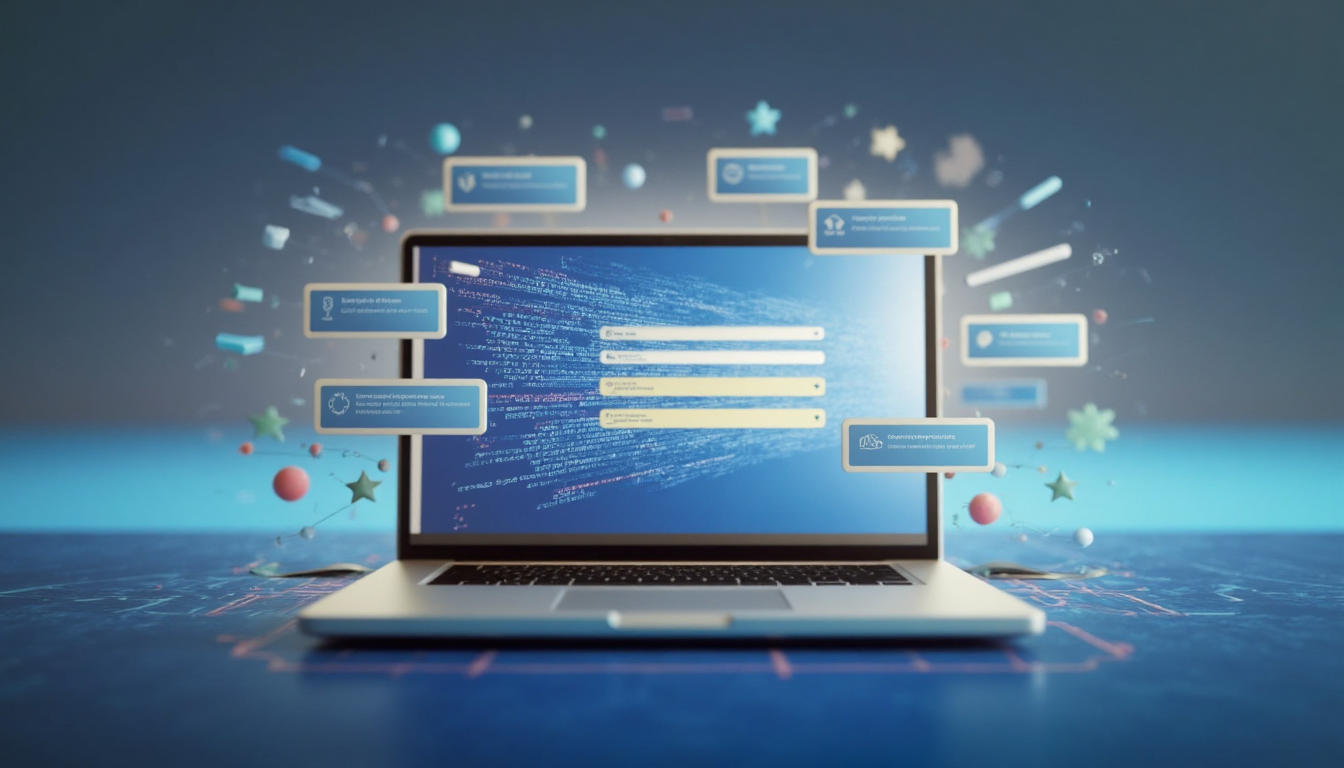SecurityReview.ai Finds the Risks That Manual Reviews Miss

Security reviews haven’t kept up with how fast engineering teams move.
Most architecture reviews are manual, time-consuming, and inconsistent. Teams are stuck reading through design docs, whiteboard notes, and Slack threads, trying to catch design flaws before they hit production. It doesn’t scale. And it’s exactly where real risk slips through.
SecurityReview.ai is an AI-powered system design reviewer built for security teams. It analyzes your architecture documents, design discussions, and real system artifacts to flag potential risks quickly.
If you’ve been hearing about AI for security and wondering what actually works in practice, this blog shows you what SecurityReview.ai does, how it fits into your workflow, and why AppSec teams are using it to cut review time by over 70% without losing control or visibility.
Table of Contents
- SecurityReview.ai Works with the Inputs You Already Use
- How SecurityReview.ai Cuts Review Time Without Cutting Corners
- How SecurityReview.ai Turns Real-World Inputs into Real-Time Threat Models
- Design-Stage Security Reviews Save You Time, Cost, and Headcount
- Continuous Design-Stage Security Without the Drag
SecurityReview.ai Works with the Inputs You Already Use
Most tools force your team to work for them: new templates, new ticket flows, and new docs. That’s friction you can’t afford. Engineering moves fast, and every extra form or diagram slows down delivery and kills security adoption.
SecurityReview.ai changes all that for the better. It meets your team where they already are: inside existing tools, workflows, and conversations.
Instead of asking engineers to rewrite or reformat what they’re already doing, SecurityReview.ai pulls real context from the places work is already happening:
- Architecture docs in Confluence or Google Drive
- Slack threads from technical discussions
- Screenshots or recordings from design meetings
- Voice notes left by engineers after whiteboard sessions
No more creating special diagrams or filling out templates just to satisfy security requirements. SecurityReview.ai pulls context from real sources your team is already using.
Why this actually scales
This matters because security can’t be a side process anymore. It has to be built into how teams ship. When tools demand perfect inputs or strict formats, they get bypassed or ignored. SecurityReview.ai avoids that by making the review process invisible to engineering while still giving AppSec teams the signal they need.
It can identify risky design patterns, flag missing controls, and suggest relevant mitigations without making dev teams stop what they’re doing or create something from scratch. That’s how you scale AppSec without becoming the bottleneck.
How SecurityReview.ai Cuts Review Time Without Cutting Corners
How many hours did your team spend in threat modeling sessions last month? How many design docs are sitting in the review queue right now?
Instead of waiting for someone to submit a doc for review (or hoping they remember), you plug SecurityReview.ai into a folder like /Architecture/Current or your existing Confluence space. From there, it does the heavy lifting in the background.
SecurityReview.ai continuously monitors your design inputs and acts as an always-on reviewer.
This means your AppSec team sees the risks that matter early without having to wade through every document manually.
Because SecurityReview.ai handles the first 80% of review effort, your team can focus on what matters: helping engineers fix issues, advising on architecture, and reducing systemic risk. You’re making threat modeling continuous and scalable.
How SecurityReview.ai Turns Real-World Inputs into Real-Time Threat Models
Threat modeling shouldn’t be a separate process that slows down development. But for most teams, it still is: manual, time-consuming, and dependent on structured inputs that engineers rarely provide. That’s why real threats get missed, and security reviews fall behind.
Threat Modeling from Unstructured Content
SecurityReview.ai builds complete threat models from design docs and system descriptions with no structured input required. The days of forcing engineers to fill out security templates are over.
Slack and Voice as Threat Model Inputs
Designate Slack channels as input sources or upload recorded meetings. SecurityReview.ai extracts architectural details from real conversations and uses them to model threats.
Continuous Document Review
New design doc dropped in Confluence at 2AM? SecurityReview.ai has already reviewed it by morning, with prioritized findings ready for your team.
Component-Based Threat Intelligence
SecurityReview.ai maps your architecture against a knowledge base of over 100,000+ known components and threat scenarios. It’s how applying proven attack patterns to your specific context works.
Risk-Based Prioritization
Not every issue is urgent, and SecurityReview.ai treats them that way. It ranks findings by actual exploitability and business impact, so your team spends time on what matters.
Role-Based Reporting
Different stakeholders need different levels of detail. SecurityReview.ai tailors outputs based on who’s asking:
- Devs get actionable and fixable tasks.
- Architects get system-level visibility into design flaws and risk areas.
- CISOs get high-level summaries tied to business risk.
Natural Language Interface
You can ask SecurityReview.ai questions in plain English and get meaningful and context-aware answers. Ask:
- What are the risks in our payments service?
- How many issues are tied to external input validation?
You’ll get a clear and prioritized response instead of a wall of raw data.
Design-Stage Security Reviews Save You Time, Cost, and Headcount
Fixing security issues late in the SDLC is expensive. Industry data consistently shows that flaws found in production cost 6x more to fix than those caught during design. But most teams still catch issues too late because early-stage reviews are slow, manual, or skipped entirely.
SecurityReview.ai helps you shift security left without adding overhead or slowing down delivery.
By automating design reviews and threat modeling from the artifacts your team already produces, you eliminate the trade-off between speed and coverage. SecurityReview.ai gives you more eyes on more designs continuously and without needing more people or asking engineers to change how they work.
Business outcomes
With SecurityReview.ai in place, you get:
- More coverage with the same headcount: no need to grow the AppSec team just to keep up with architecture reviews.
- Faster time-to-market: because security becomes part of the flow instead of a late-stage blocker.
- Reduced risk exposure: by catching design flaws early, when they’re cheap to fix.
- Clear visibility into design-level issues: so you don’t get blindsided in staging or prod.
Continuous Design-Stage Security Without the Drag
SecurityReview.ai gives your AppSec team what most tools only promise: real coverage, real risk insight, and real-time saved. You get accurate threat modeling and continuous design reviews, powered by the inputs your teams already generate.
And if you’re under pressure to scale security without slowing down delivery, this matters. You need visibility earlier in the lifecycle, actionable outputs for engineers, and reports that make sense at every level of the org. SecurityReview.ai delivers that with no extra headcount and no workflow disruption.
So if your security reviews are lagging behind your development pace, it’s time to assess what SecurityReview.ai can take off your team’s plate. Start by reviewing how your team handles design reviews today, and where automation could free them up to focus on what actually reduces risk.
Are you ready to move faster and catch more?
FAQ
What is SecurityReview.ai, and how is it different from other AI tools?
SecurityReview.ai is purpose-built for AppSec teams. Unlike generic AI chatbots, it integrates directly into your design review workflows, processes real-world inputs like architecture docs and Slack conversations, and delivers accurate, prioritized threat modeling without disrupting engineering.
How does SecurityReview.ai help reduce security review time?
It continuously monitors your design artifacts — like system docs, diagrams, and meeting notes — and performs threat modeling automatically. That means your team no longer has to manually read every document or host lengthy workshops just to find risks. Reviews that used to take hours now take minutes.
Does SecurityReview.ai require structured inputs or templates?
No. It works with the inputs your team already creates: unstructured design docs, Confluence pages, Slack discussions, meeting recordings, and voice notes. You don’t need to force engineers into filling out special forms or changing how they work.
How does SecurityReview.ai prioritize risk?
It maps your architecture against a threat intelligence base of 100,000+ known components and attack patterns. It then ranks findings based on exploitability and business impact — not just theoretical severity — so your team can focus on what matters most.
Can SecurityReview.ai tailor reports for different audiences?
Yes. SecurityReview.ai delivers role-based outputs: Developers get clear, actionable tasks. Architects see system-level design risks. CISOs get high-level summaries tied to business risk — not just technical details.
Is SecurityReview.ai just another “AI chatbot”?
No. It’s not a chatbot with a security glossary — it’s a real-time, architecture-aware security reviewer. It understands system components, data flows, and design patterns in your environment, and flags risks based on that context.
What types of inputs does SecurityReview.ai support?
It works with: Architecture docs in Confluence or Google Drive Technical conversations in Slack Voice notes or meeting recordings Shared folders like /Architecture/Current for automatic monitoring
Does SecurityReview.ai support natural language queries?
Yes. You can ask questions in plain English like: “What are the risks in our payments service?” “How many open issues involve external input validation?” You’ll get clear, context-aware answers and next steps — not generic summaries.
How does SecurityReview.ai help shift security left?
By plugging into early-stage inputs and continuously reviewing them, SecurityReview.ai surfaces design risks before any code is written. This means security becomes part of the planning and architecture phase — without adding process overhead or friction for dev teams.
What are the main business benefits of using SecurityReview.ai?
Faster reviews without hiring more AppSec engineers Fewer missed risks at the design stage Reduced cost of fixing issues (before they reach production) Better collaboration across security, engineering, and leadership Clear visibility into risks — from dev to CISO level







.png)
.png)
.png)





